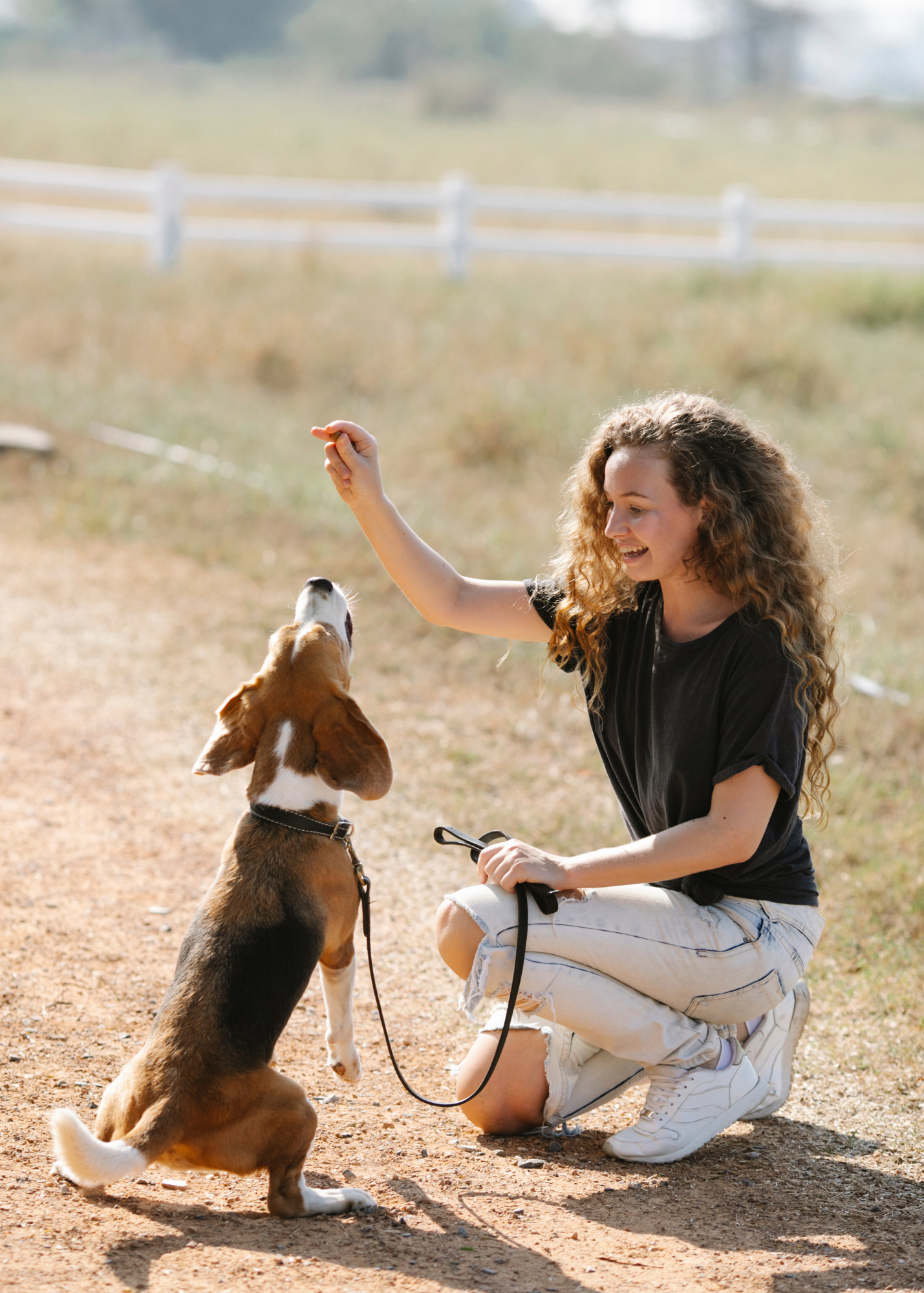Dogs are known as humans’ best friends for a reason. They provide us with companionship, comfort, and unconditional love. In fact, a large body of evidence demonstrates that dogs, along with other pets, provide mental and physical health benefits to humans, including improving heart health, reducing symptoms of depression, and increasing our overall well-being.
When people are experiencing crises such as domestic violence or homelessness, keeping their dog by their side is often a very high priority. While dogs tend to outwardly adapt to new environments better than other companion animals, they still require the proper support, resources, and understanding from the humans around them to be able to adjust appropriately. Living in a pet friendly shelter is a transition for the whole family, including pets.
It’s important to remember that even good change can be hard, and some amount of stress and anxiety when experiencing change is completely normal. Preparing for how to combat stress will help ease the transition, supporting everyone’s ability to adjust.
What Does a Stressed Dog Look Like?
Many pet owners believe that dogs are more expressive than their feline counterparts, making it easier to identify when something is awry. However, every dog is unique and behaves in different ways. Stressed behavior in dogs may be misinterpreted as excitement or poor training. Dogs may even be labeled as “bad” or punished for misbehaving, when in reality they are simply communicating feelings of discomfort. Paying close attention to their body language is crucial to understanding when dogs are showing warning signs of stress and anxiety. These warning signs may include:
- Dilated pupils
- Lowered or pulled back ears
- Tucked tail
- Hunched or crouched body
- Panting or drooling
- Pacing
- Trembling
- Refusal of food
- Barking or growling
- “Whale eyes” (showing the whites of the eye)
- Inappropriate urination or defecation
- Sweaty paws

Anxious dogs may also choose to withdraw from social situations or avoid spending time with their owner. In severe cases, some dogs may hide completely. It is important to regularly and consistently keep track of dogs’ movements in order to quickly notice when withdrawing starts to occur. Dogs hiding or withdrawing cause other health concerns to go unnoticed for longer periods of time.
When dogs are exposed to stressful or frightening environments for an extended period of time, they may develop chronic stress. This can occur when dogs live in emergency housing for long periods of time or it could be due to issues from their prior housing situation. Dogs experiencing chronic stress are at greater risk for many health problems, including immune system disorders, nervous system disorders, and gastrointestinal disease.
Signs of chronic stress may include:
- Depression and irritability
- Excessive sleepiness or inability to sleep
- Loss of interest in food
- Loss of interest in play
- Withdrawing from the owner and other family members
- Difficulty adapting to minor changes or stressors
- Excessive or compulsive grooming (licking, chewing, scratching)
Reducing Canine Stress
Identify Stressors
Whether you are the pet parent or a shelter staff member, paying attention to what dogs find stressful is important to discovering remedies. If you are the pet parent, make a list of all the things that you notice that make your dog uncomfortable. It’s even better to start this list prior to seeking emergency housing to help make the transition easier.
Create a Relaxing Space
Creating a “safe zone” where a dog is able to have quiet, undisturbed time away from people or other pets can help reduce feelings of stress and anxiety. In emergency housing, consider using a dog crate or pet gate to create an area of the room that is blocked off from others. Crate training can be extremely helpful for reducing stress in dogs as it allows them to independently choose to enter a space that they are comfortable relaxing in.
Follow a Routine
Following a consistent routine can help ease daily stressors for dogs, their humans, and shelter staff. Create a schedule where meals, play time, and rest occur at the same time every day. This helps to take away feelings of uncertainty, which are known to contribute to stress, anxiety, and depression.
Stay Calm
Dogs can sense and respond to human emotions, making it essential for owners and shelter staff to be cognizant of their body language, facial expressions, and tone of voice.

If you’re feeling stressed, frustrated, or overwhelmed, consider taking a moment to meditate or simply take a few deep breaths before interacting with a dog in your program. Wait until you are feeling calm before entering a dog’s kennel or living area.
Provide Exercise and Pay Time
No matter the physical space available at a shelter, dogs need physical and mental stimulation to keep them happy, improve their behavior, and help strengthen the bond with their human.

Exercises and games can include:
- Stair recall game
- Snuffle mats
- Fetch
- Hide and seek
- DIY obstacle courses
Practice Basic Training
Similar to play time, dedicating time to training and confidence building exercises helps improve behavior, reduce stress, and strengthen the relationship and trust between the owner and their dog. Providing basic training for dogs while in emergency housing can also make it easier for their owner to find long-term housing. Rental managers appreciate applicants who are able to show that their dog has learned basic obedience skills.
Spend Quality Time Together
Don’t forget one-on-one time simply for relaxing together! Most dogs crave attention from their humans, and this can be as simple as spending time on the couch giving pets and chin scratches.
Make sure to provide your shelter residents with a comfortable and safe space to socialize with their dog. Consider creating a pet friendly living room or visitation area complete with comfortable seating, wifi, and even a tv. These amenities help encourage pet owners to spend time with their animals, and this quality time comes with emotional and physical benefits for both!
Ask for Help
Understanding canine behavior and anxiety can be challenging, so don’t be afraid to ask for expert help! Reach out to your local animal shelter, dog rescue, or humane society to ask for their support and expertise.
Your animal welfare partner can assist you in many ways, such as:
- Providing education on animal behavior and basic animal training
- Helping with designing living spaces for pets at human shelters that prioritize calming environments
- Assisting as a backup housing option for severe cases
Visit the Veterinarian
Scheduling regular appointments with your veterinarian is important for dogs’ physical and mental health. Veterinary professionals are trained to notice physical and behavioral abnormalities quickly and they are able to offer guidance, resources, medications, or referrals to help. There may be situations where dogs are unable to adjust in emergency housing due to serious anxiety issues, and having a veterinary partner is crucial to developing next steps to putting your dog at ease.
Dogs with severe stress may benefit from prescription medication to help manage anxiety. Reducing anxiety through medication therapy can help dogs with chronic issues become more receptive to learning and modifying their behavior. Veterinarians can help create an appropriate treatment plan that considers the needs of the patient, client, and the shelter.
Learn More
Are you a domestic violence or homeless shelter staff member who would like to connect one-on-one about helping dogs in your pet program? Check out the Don’t Forget the Pets Coaching Program where we provide free support for organizations helping people and pets in crisis. Be sure to take a peek at our Video Library for Deep Dives on dog related topics or browse the resources below:
Collaborative for Shelter Dogs article on dog communication and body language
Cummings School of Veterinary Medicine article on anxiety in dogs
Cornell University College of Veterinary Medicine article on anxious behavior in dogs
Maddie’s Fund video on stress reduction for dogs
Fear Free Happy Homes content library on canine fears and anxieties
Doggie Language: A Dog Lover’s Guide to Understanding your Best Friend by Lili Chin
Ketia Johnson is the Outreach Manager for RedRover. Prior to joining the Don’t Forget the Pets team, she earned her Master’s degree in Anthrozoology from Canisius College and spent over 8 years working in veterinary medicine at animal shelters.



